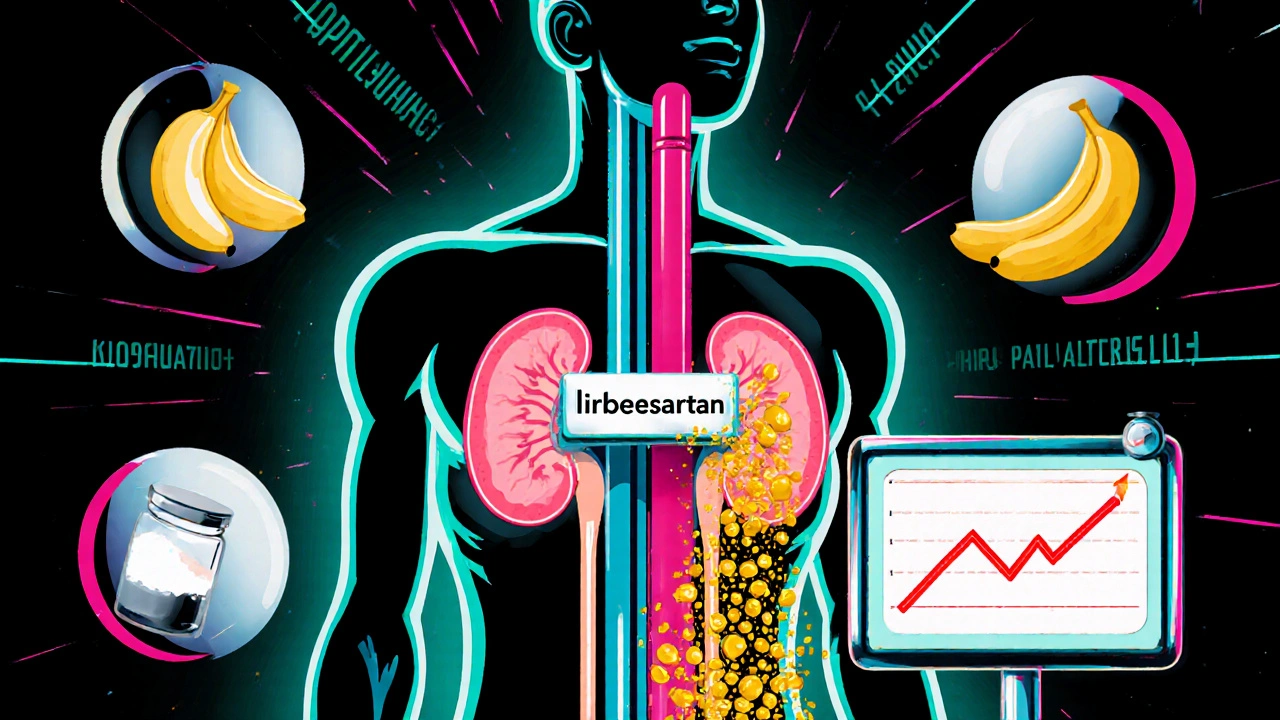
When you take irbesartan for high blood pressure, you’re not just lowering your blood pressure-you’re also changing how your body handles potassium. This isn’t something most people think about until a blood test shows their potassium is too high. And that’s when things can get serious, fast.
What Irbesartan Actually Does
Irbesartan is an angiotensin II receptor blocker, or ARB. It works by blocking a hormone called angiotensin II, which normally tightens blood vessels and tells your kidneys to hold onto salt and water. By blocking this hormone, irbesartan helps your blood vessels relax and your body get rid of extra fluid. That’s how it lowers blood pressure.
But here’s the catch: angiotensin II also tells your kidneys to get rid of potassium. When you block it, your kidneys don’t flush out as much potassium as they should. That means potassium builds up in your blood. This isn’t a side effect you can ignore-it’s a direct, predictable result of how the drug works.
Why High Potassium Is Dangerous
Potassium is essential for your heart, muscles, and nerves. But too much of it-above 5.0 mmol/L-can mess with your heart’s rhythm. In mild cases, you might feel nothing. In severe cases, it can cause irregular heartbeat, muscle weakness, or even cardiac arrest. You won’t always feel symptoms until it’s too late.
That’s why doctors order blood tests to check potassium levels, especially when you start irbesartan or change your dose. The first test usually happens within 1 to 2 weeks. If your potassium is rising, they’ll adjust your treatment before it becomes a crisis.
Who’s Most at Risk
Not everyone on irbesartan gets high potassium. But some people are much more likely to. If you have any of these, your risk goes up:
- Chronic kidney disease (especially stage 3 or worse)
- Diabetes
- Age 65 or older
- Taking other medications that raise potassium (like spironolactone, eplerenone, or NSAIDs)
- Using salt substitutes that contain potassium
- Eating a lot of potassium-rich foods (bananas, oranges, spinach, potatoes, beans)
People with kidney disease are the biggest group affected. Their kidneys can’t clear potassium efficiently to begin with. Add irbesartan on top, and the risk jumps. One study of over 12,000 patients found that those with moderate kidney disease had nearly three times the risk of high potassium on ARBs like irbesartan compared to those with healthy kidneys.
What You Can Do to Stay Safe
You don’t have to stop taking irbesartan if your potassium rises. But you do need to act. Here’s what works:
- Get regular blood tests. Your doctor will likely check potassium within the first month, then every 3 to 6 months if you’re stable.
- Watch your diet. You don’t need to cut out bananas entirely, but avoid large amounts of high-potassium foods daily. A medium banana has about 420 mg. A cup of cooked spinach has over 800 mg. Swap one for lower-potassium options like apples, cabbage, or rice.
- Avoid potassium supplements. Even over-the-counter ones can push your levels up. Same goes for salt substitutes-many contain potassium chloride.
- Talk to your doctor before starting any new medicine. Even common painkillers like ibuprofen can interfere with potassium balance when taken with irbesartan.
- Don’t skip your checkups. If you feel weak, tired, or notice your heart skipping beats, get tested. Don’t wait.
What If Your Potassium Is Too High?
If your potassium level is above 5.5 mmol/L, your doctor will likely take action. This isn’t always an emergency, but it needs attention.
Options include:
- Lowering your irbesartan dose
- Switching to a different blood pressure drug (like a calcium channel blocker)
- Starting a diuretic like hydrochlorothiazide to help flush out extra potassium
- Adjusting your diet more strictly
In rare cases, if potassium is very high (above 6.5 mmol/L) and you have heart rhythm changes, you’ll need urgent treatment-like IV calcium, insulin, or dialysis. But this is uncommon if you’re getting regular monitoring.
Irbesartan vs. Other Blood Pressure Meds
Not all blood pressure drugs affect potassium the same way. Here’s how irbesartan compares:
| Medication Type | Effect on Potassium | Common Examples |
|---|---|---|
| ARBs (like irbesartan) | Increases | Losartan, valsartan, candesartan |
| ACE inhibitors | Increases | Enalapril, lisinopril, ramipril |
| Thiazide diuretics | Decreases | Hydrochlorothiazide, chlorthalidone |
| Loop diuretics | Decreases | Furosemide, bumetanide |
| Potassium-sparing diuretics | Increases | Spironolactone, eplerenone |
| Calcium channel blockers | Neutral | Amlodipine, diltiazem |
If you’re already on a potassium-sparing diuretic like spironolactone, combining it with irbesartan is risky. Many doctors avoid this combo unless absolutely necessary. If you’re on both, you’ll need very close monitoring.
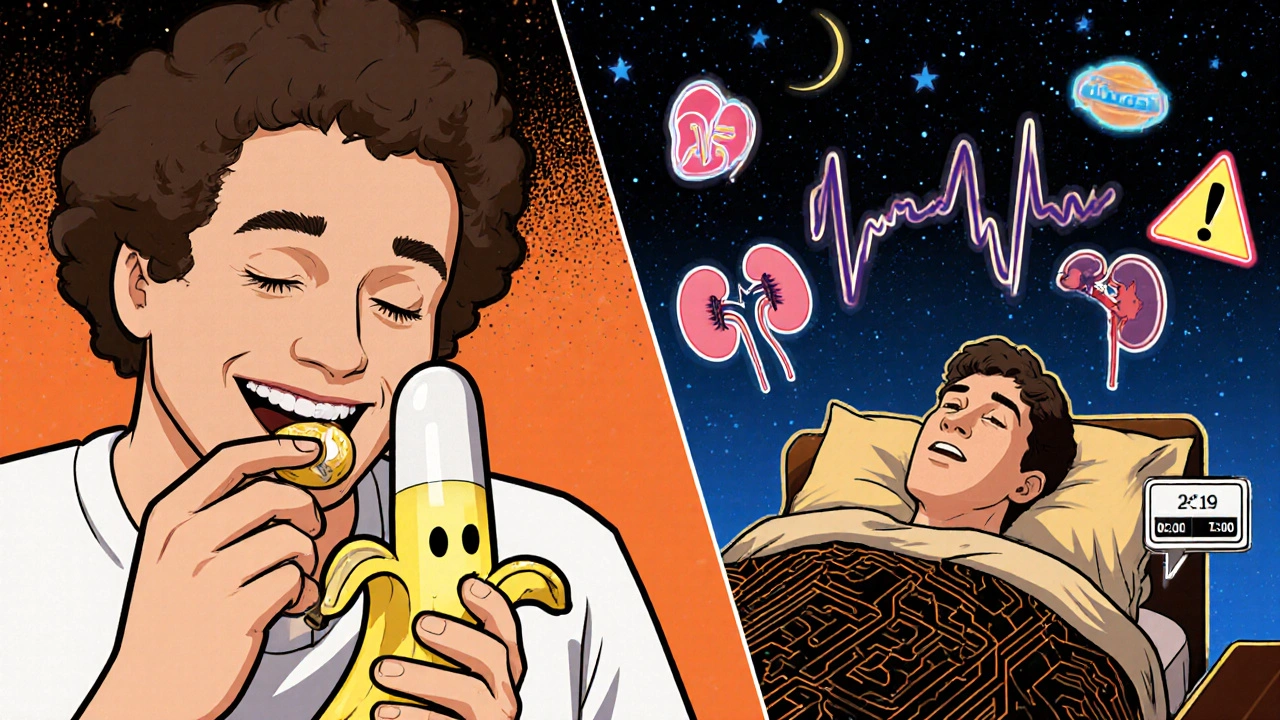
What to Ask Your Doctor
Don’t wait for a problem to arise. Bring these questions to your next appointment:
- What’s my current potassium level, and is it in the safe range?
- How often should I get my potassium checked?
- Are there any foods or supplements I should avoid?
- Could any other meds I’m taking be raising my potassium?
- What would we do if my potassium goes too high?
These questions show you’re informed and proactive. Doctors appreciate that-and it helps them keep you safe.
Real-Life Example
One patient in Perth, 72, with type 2 diabetes and mild kidney disease started irbesartan for high blood pressure. He felt fine. No dizziness, no swelling. But at his 6-week checkup, his potassium was 5.8 mmol/L-dangerously high. He had been eating two bananas a day and using a salt substitute. His doctor lowered his irbesartan dose and switched him to a low-sodium diet without potassium salt. Within a month, his potassium dropped to 4.2. He stayed on irbesartan, just at a safer dose.
He didn’t have symptoms. He didn’t feel sick. But without that blood test, he could have had a heart rhythm problem while sleeping.
Bottom Line
Irbesartan is a great drug for lowering blood pressure and protecting your kidneys-especially if you have diabetes. But it can raise potassium, and that’s not something you can guess or feel. You need blood tests to know.
Don’t stop taking it unless your doctor tells you to. But do get your levels checked. Watch what you eat. Avoid potassium supplements. Talk to your doctor before taking anything new. With simple steps, you can keep your blood pressure under control and your potassium safely in range.
Can irbesartan cause high potassium even if I don’t eat bananas?
Yes. While eating too many potassium-rich foods can contribute, irbesartan itself reduces how much potassium your kidneys remove. Even if you eat a normal diet, your body may still hold onto more potassium than usual. That’s why blood tests are necessary-not diet alone.
Is it safe to take potassium supplements while on irbesartan?
No. Taking potassium supplements while on irbesartan can cause your levels to rise dangerously high. Even if you feel fine, your kidneys may not be clearing potassium effectively. Always check with your doctor before taking any supplement.
How long does it take for potassium to rise after starting irbesartan?
Potassium levels can start to rise within the first week, but the biggest changes usually happen in the first 2 to 4 weeks. That’s why doctors test potassium around 1 to 2 weeks after starting, and again at 4 weeks.
Can I switch to a different blood pressure pill if my potassium is high?
Yes. If potassium stays high despite diet changes and dose adjustments, your doctor may switch you to a calcium channel blocker like amlodipine, which doesn’t affect potassium. This is common and safe, especially for people with kidney disease or diabetes.
Does drinking more water help lower potassium while on irbesartan?
Drinking more water won’t lower potassium levels significantly. Potassium is removed by your kidneys, not flushed out by fluids. In fact, drinking too much water can dilute sodium and cause other problems. Focus on diet and medication changes instead.
Sabrina Bergas
Let me break this down for you people who think this is just about bananas and salt substitutes - irbesartan doesn’t just ‘raise potassium’ - it disrupts the renin-angiotensin-aldosterone system at the receptor level, leading to reduced aldosterone secretion, which directly impairs distal nephron potassium excretion. This isn’t a dietary issue, it’s a pharmacodynamic inevitability. Stop blaming the avocado toast.
And for the love of god, if you’re on an ARB and have eGFR <60, you’re already in the high-risk cohort. No amount of ‘I eat healthy’ changes that. Blood tests aren’t optional - they’re your only lifeline.
Melvin Thoede
Big shoutout to the doc who wrote this - seriously, this is the kind of info that saves lives. I’ve seen too many people panic and quit their meds because they heard ‘high potassium’ and thought ‘cancer’ or ‘death.’ It’s not. It’s manageable. Just check your numbers. Eat smart. Talk to your team.
You’re not alone. You’re not doomed. You’re just informed now. And that’s power.
Stay safe out there 💪
Suzanne Lucas
Okay but like… what if your doctor just doesn’t care? I had my potassium at 5.9 and they were like ‘eh, we’ll monitor.’ I almost died in my sleep. Like, I woke up with my heart doing the cha-cha and my arm numb. That’s not ‘monitoring.’ That’s Russian roulette with a prescription.
Doctors need to stop treating this like it’s a suggestion. It’s a ticking clock.
Ash Damle
My mom’s on irbesartan and she’s 70 with diabetes and kidney stuff and I was terrified until I read this
Now I check her bloodwork with her every time and we swap bananas for apples and she says she feels better than ever
Just listen to your body and your docs and don’t let fear stop you from living
you got this
Kevin Ouellette
This is gold. I’m a nurse and I see people panic over potassium numbers all the time. The key is context. A 5.2 on a 75-year-old with CKD? Yeah, that’s a red flag. A 5.2 on a 30-year-old athlete who eats kale smoothies daily? Maybe not.
Don’t panic. Don’t ignore. Just get tested. Talk to your provider. Adjust. Keep going.
You’re not broken. You’re just managing a condition. And that’s totally okay. 💙
Tanya Willey
They don’t want you to know this but ARBs were pushed by Big Pharma to replace ACE inhibitors after the cough side effect blew up. Now they’re selling you a ‘safer’ drug that does the same thing but hides behind ‘potassium monitoring’ like it’s a feature not a flaw.
Meanwhile, your kidneys are slowly drowning in potassium while your doctor sips coffee and says ‘it’s normal.’
Ask yourself - who benefits when you need lifelong blood tests? Not you.
sarat babu
I am from India and I have seen so many people die because of this!!! Why no one tell this? Why no government warn people? I have cousin, he take irbesartan, he eat banana, mango, coconut water, he think healthy food is good, but he have kidney problem, he die in hospital, heart stop, no warning!!! This is crime!!! Doctors must tell everyone!!! I cry every time I think about this!!! Please, please, please, share this post!!! Save lives!!!
Wiley William
Let’s be real - this whole ‘monitor potassium’ thing is a Band-Aid on a gunshot wound. The real problem? We’re medicating chronic conditions with drugs that create new chronic problems. You’re not fixing hypertension - you’re trading one slow death for another.
And don’t get me started on the ‘switch to a calcium channel blocker’ cop-out. Amlodipine causes ankle swelling, gum overgrowth, and fatigue - and it’s still ‘safer’? That’s like replacing a broken leg with a limp.
Pharma’s got us on a treadmill and they’re selling us the shoes.
Richard H. Martin
What’s next? Are we gonna start banning bananas because some foreign drug messes with our kidneys? This is why America’s health system is broken - we’re scared of our own bodies now. Take the pill. Eat your food. Stop overthinking. You’re not a lab rat.
My grandpa took this for 20 years. Never had an issue. He lived to 92. What’s your excuse?
Scott Horvath
just read this and my head exploded
my aunt is on this med and i never knew about the potassium thing
we're gonna get her bloodwork done this week
thank you for writing this
so many people dont know this and it could kill them
please share this with anyone on blood pressure meds
you're doing god's work
Armando Rodriguez
This is an exceptionally well-structured and clinically accurate overview. As a physician, I appreciate the clear delineation of risk factors, management strategies, and comparative pharmacology. The inclusion of real-world examples and patient-centered questions enhances patient engagement and shared decision-making.
It is imperative that primary care providers and pharmacists reinforce these points during medication counseling. The data is unequivocal: potassium monitoring is non-negotiable in patients on ARBs with comorbid conditions.
Thank you for this vital contribution to patient education.
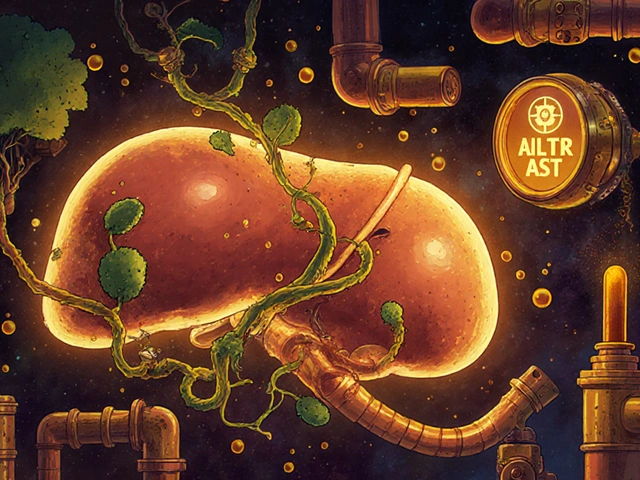


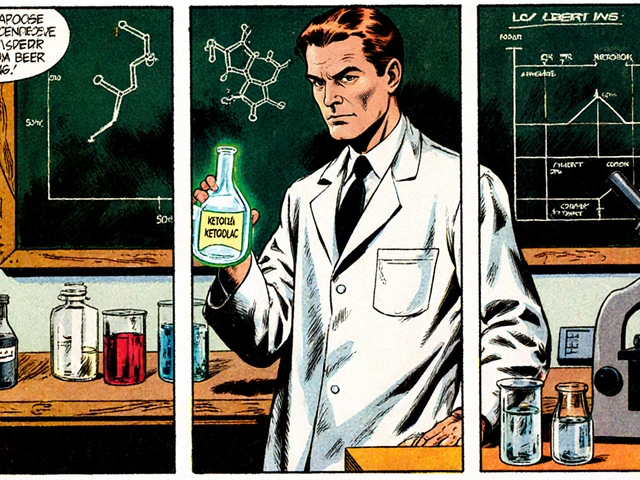
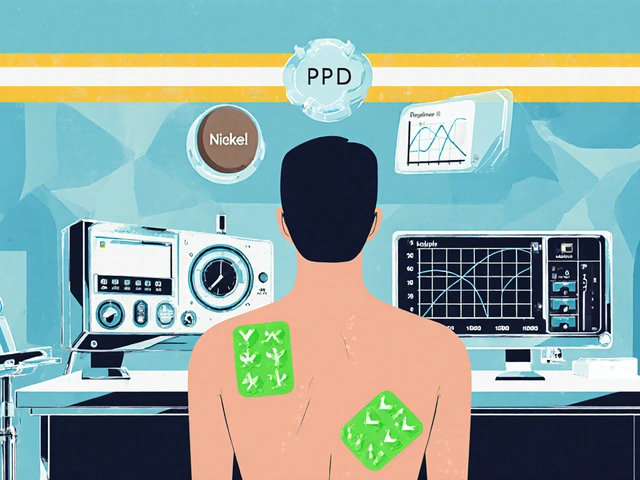
Write a comment